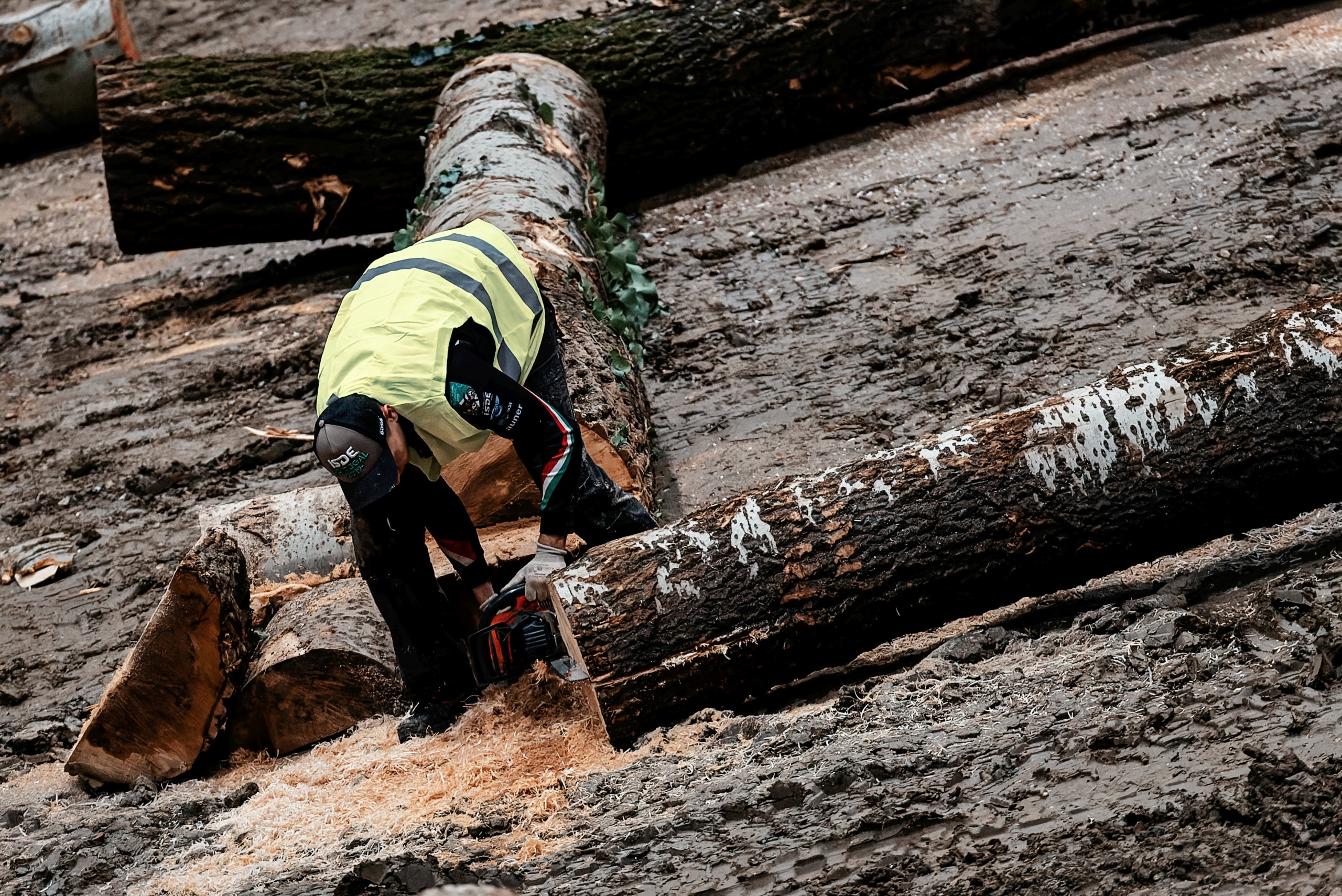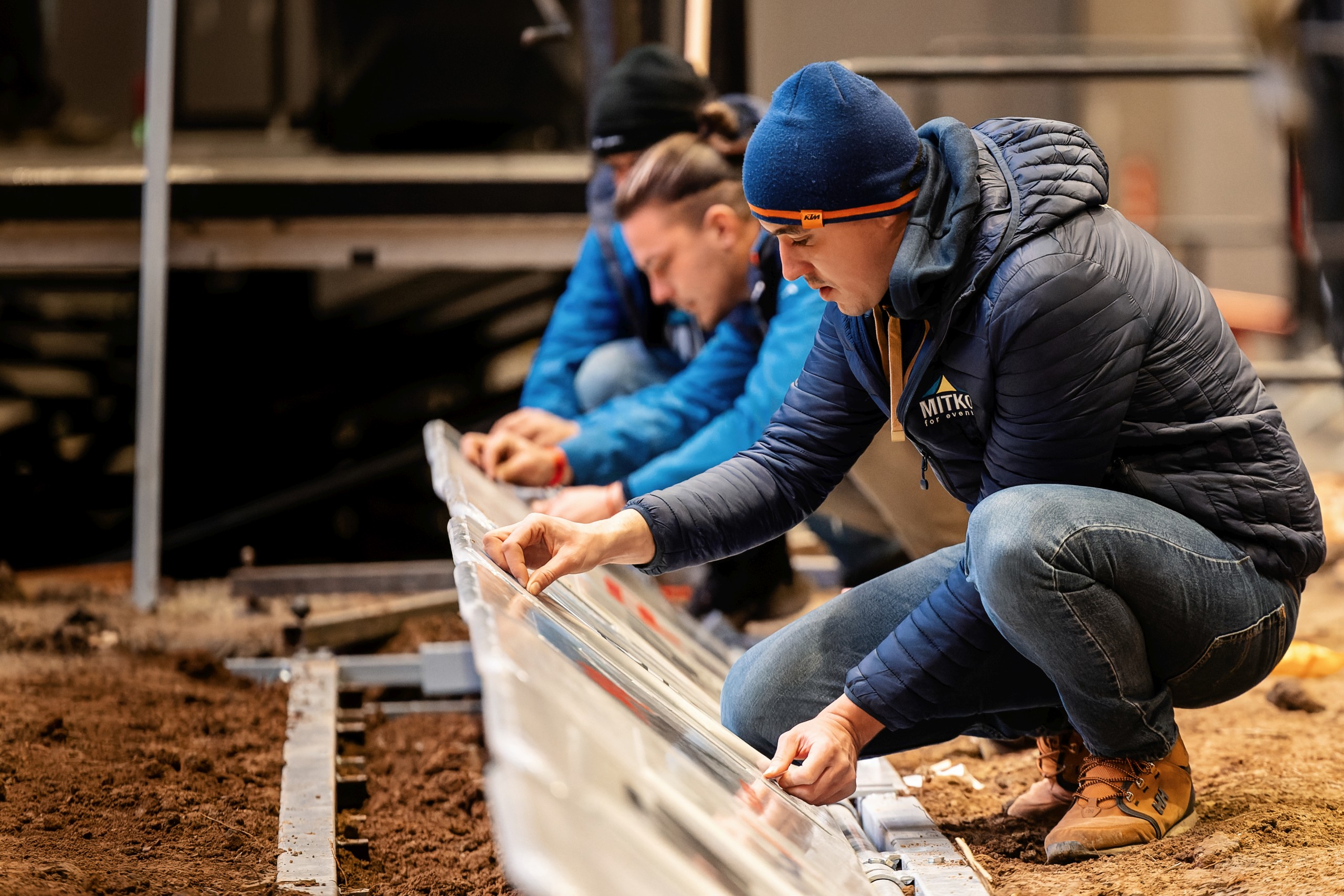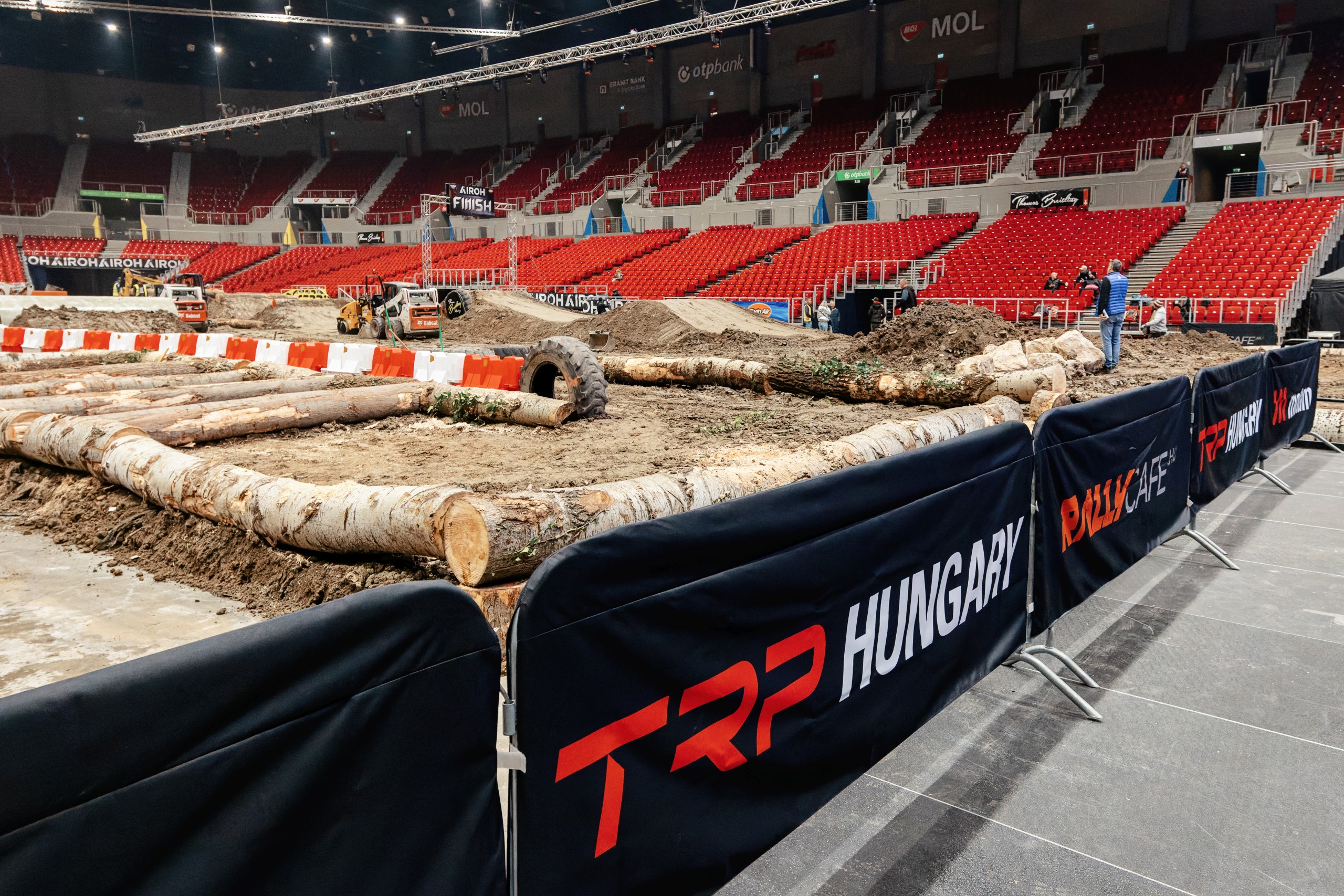TRP Hungary held the Budapest round of the Superenduro World Championship on 4 February with a full house. The event proved to be a success in every respect, requiring hard work on several fronts by the agencies and professionals involved in its organisation.
The Budapest round of the Superenduro World Championship was held on 4 February at the Papp László Sport Arena. The event proved to be a success in more ways than one: tickets sold out weeks in advance and the event ran smoothly. In addition, there was also a Hungarian success, as Márk Szőke won a race in the European Cup and Norbert Zsigovits achieved his best result ever in the Prestige category.
However, the successful organisation of the event did not happen by itself, as it required the hard work of many people and companies. Unlike in previous years, this time both the organisational and promotional tasks were handled by TRP Hungary, or more precisely by TRP Events, the group’s specialist event management company. This was a huge responsibility but supporting agencies Doppio and Mitko Hungary as well as MAMS and former rider Kornél Németh could be counted on this time as well.
The preparations started already at the end of the summer: the TRP Hungary staff was not unfamiliar with the sport, as they had worked with the previous organiser, Race4U Promotion on previous races, but there were also some changes: this was the first test for the TRP Hungary internal marketing team, the race was broadcasted by Sport TV, and the technical background was provided by Antenna Hungária on a more difficult and spectacular course than ever before.
This is how a Superenduro track is built
The construction of the course itself started at 2am on the Thursday before the race and finished at 10pm on the day after the race, when the Arena was returned. The time between the two dates was 92 hours, which meant that the organisers had to work continuously for 5520 minutes. The highlight of the day was of course Saturday, including the evening of the finals.
In order to get the work started on time, it was necessary to start organising well in advance, as the challenging but enjoyable track required a huge amount of materials. Around 1200 cubic metres of wet dirt were needed, which was equivalent to around 1600 tonnes. This was spread over a surface 30 centimetres thick, not counting, of course, the jumps, which were 1 to 2 metres high. In addition, 40 tonnes of stone and timber each and 3.2 tonnes of fibreglass tubes had to be transported to the Sports Arena. Once this was done, three Bobcat excavators, each weighing 3 tonnes, and a Kubota mini-truck weighing 1.7 tonnes were available. As in previous years, a particular difficulty was the fact that the Arena has a cooling pipe system for the ice rink under the playing field, which the 84 trucks and 3 lorries transporting the materials could not drive onto.
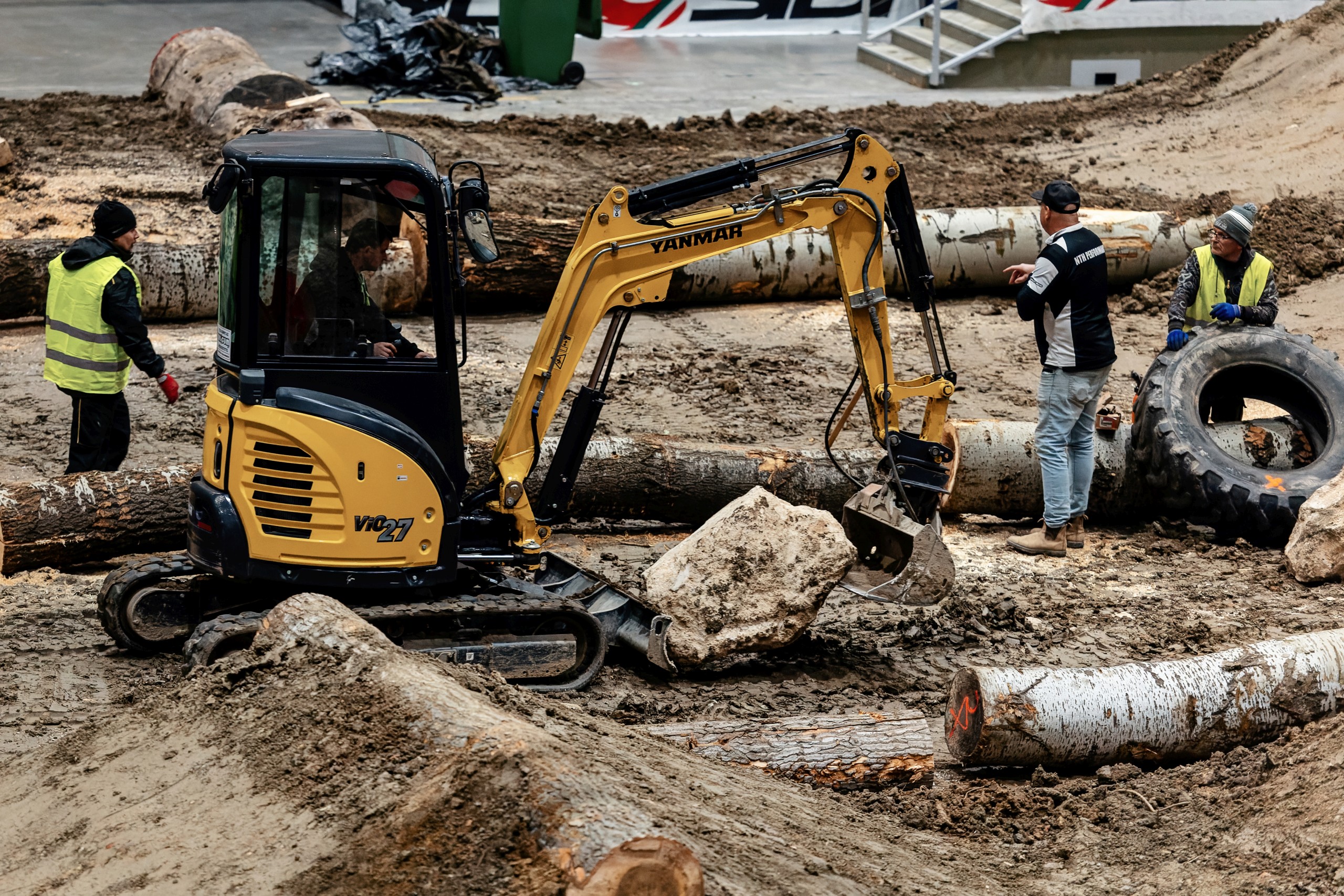
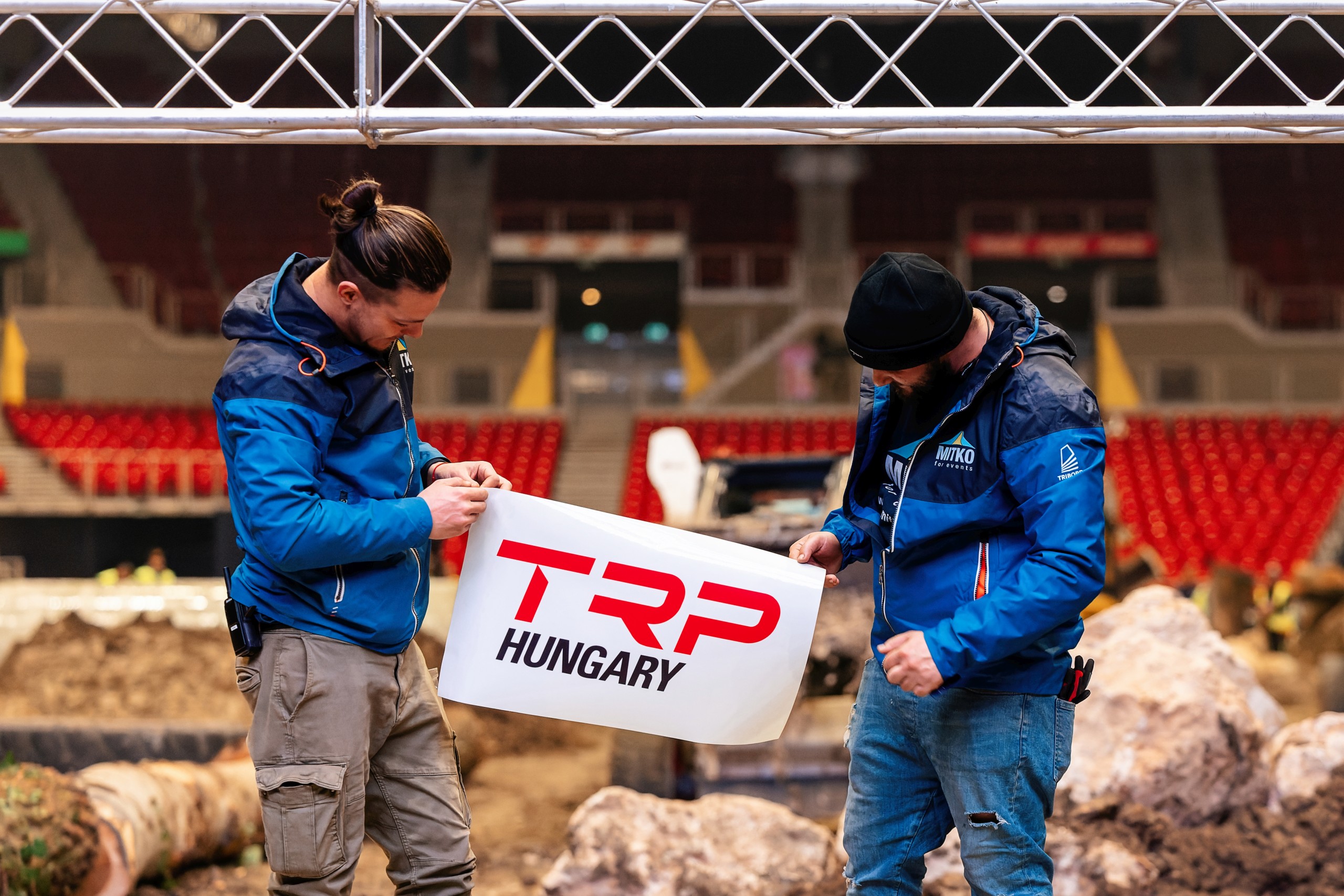
As for the day itself, a total of 300 people were accredited for the event. Fifty radios, three kilometres of cabling, two million pieces of equipment and countless colleagues were needed to make everything work perfectly. The effort that the organisers had to put in during those four days is shown by the fact that 300 cups of coffee and 270 cans of coke were consumed every day.
It has been proven that there is a demand for the Superenduro World Championship among the Hungarian public, so TRP Hungary is preparing even bigger plans for the future. As Jorge Viegas, President of the International Motorsports Federation, also honoured the event with his presence, there was also an opportunity to discuss further possibilities. The fact is that the cost of rural events has increased significantly in recent years, so there is a need for formats that have the infrastructure in place and provide a more physical experience for the fans. The Superenduro GP of Hungary certainly meets all these requirements.
